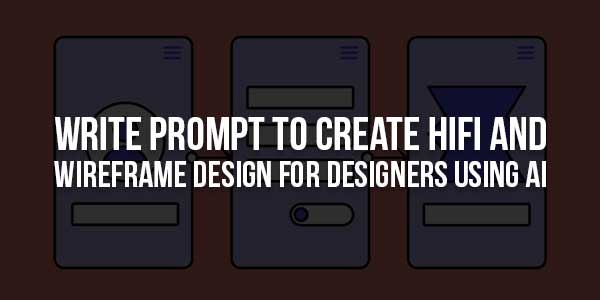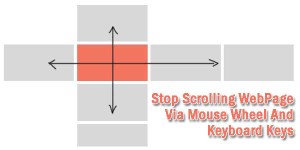
Hey there, fellow designer. Let me ask you something—have you ever found yourself staring at a blank artboard, cursor blinking, with that familiar mix of excitement and absolute terror? You’ve got this brilliant concept in your head, but getting it out onto the screen feels like trying to catch smoke with your bare hands.
I’ve been there more times than I’d like to admit. Late nights, endless coffee, and that nagging feeling that there has to be a better way. And then AI came along, and honestly? It felt like someone handed me a superpower I wasn’t quite sure how to use.
But here’s the thing I learned the hard way: AI doesn’t replace your design skills. It amplifies them. The real magic happens in how you talk to these tools. It’s all about the prompt—that little string of words that can either give you gold or absolute gibberish.
So grab your favorite beverage, get comfortable, and let me walk you through what I’ve discovered about crafting prompts that actually give you usable, professional HiFi and wireframe designs. No fluff, no technical jargon—just practical advice from someone who’s made all the mistakes so you don’t have to.
Table of Contents
Why Prompt Engineering Is Your New Secret Weapon
Remember when we first started using design tools? There was always that learning curve—where to find the right tools, which shortcuts to use, how to work efficiently. Well, prompt engineering is exactly that for AI design. It’s not about being a programmer or tech wizard—it’s about learning to communicate clearly with a tool that thinks differently than we do.
Think of it this way: if you walked up to a junior designer and said “make it pop,” what would you get? Probably something completely different from what’s in your head. But if you said “increase the contrast between the primary CTA and the background, use a subtle drop shadow for depth, and animate the hover state with a 300ms ease-in-out transition”—now we’re talking.
AI needs that same level of specificity. The difference is that AI doesn’t have human intuition to fill in the gaps. It takes your words literally and does exactly what you tell it to do. Which is amazing when you learn to speak its language.
The Fundamental Mindset Shift For AI-Assisted Design
Before we dive into the actual prompt formulas, we need to talk about mindset. This was the biggest hurdle for me personally. I kept treating AI like it was a human intern who understood design principles intuitively.
Spoiler alert: it doesn’t.
AI design tools are incredibly powerful pattern recognition machines. They’ve analyzed millions of designs and can replicate styles, layouts, and patterns with astonishing accuracy. But they don’t “understand” design in the human sense. They’re statistical engines that predict what should come next based on what they’ve seen before.
Once I wrapped my head around this, everything changed. Instead of getting frustrated when AI didn’t “get” my vague requests, I started giving it the specific ingredients it needed to assemble something great.
“The most successful AI prompts don’t just describe what you want—they provide the context, constraints, and creative direction that allow the AI to function as a true collaborative partner rather than a mindless tool.”
Crafting The Perfect Wireframe Prompt: Structure Matters
Let’s start with wireframes because they’re the foundation of everything. A great wireframe is like the blueprint of a building—it shows the structure, the flow, the relationships between elements, without getting distracted by colors and fancy details.
When I first started prompting for wireframes, I’d say things like “create a wireframe for a fitness app.” What I got back was… well, it was technically a wireframe. But it was generic, lacked any specific user flow, and didn’t account for the actual problem we were trying to solve.
Here’s what I learned: great wireframe prompts need to include these essential components:
- Context and Purpose: What is this product for? Who is using it and why?
- Key Screens and User Flow: What are the primary screens and how do they connect?
- Content Hierarchy: What’s most important on each screen?
- Functional Requirements: What does the user need to be able to do?
- Technical Constraints: Any platform-specific requirements?
Wireframe Prompt Formula That Actually Works
After countless iterations, I’ve settled on this structure that consistently gives me usable results:
Create a [low-fidelity/mid-fidelity] wireframe for a [type of product] that helps [target user] achieve [primary goal]. Include screens for [list 3-5 key screens]. Focus on [specific user task or flow]. Use standard UI patterns for [platform]. Prioritize [most important element or principle].
Let me break down why this works with a real example. Say we’re designing a meal planning app for busy parents:
Create a mid-fidelity wireframe for a mobile meal planning app that helps busy parents quickly plan healthy meals for their family. Include screens for: weekly meal calendar, recipe search and filtering, shopping list generation, and family preference settings. Focus on the flow from browsing recipes to adding them to the weekly plan. Use standard iOS UI patterns. Prioritize simplicity and speed over extensive features.
See the difference? The AI now understands:
- Exactly what we’re building (mobile meal planning app)
- Who it’s for (busy parents) and what they need (quick, healthy meal planning)
- The specific screens we need
- The primary user flow we’re optimizing for
- The platform constraints (iOS patterns)
- The design principle guiding decisions (simplicity and speed)
Common Wireframe Prompt Mistakes To Avoid
We all make mistakes—here are the ones I see most often (and have definitely made myself):
- Being too vague: “Design a social media app” vs. “Design the onboarding flow for a photo-sharing app targeting amateur photographers”
- Forgetting the user context: AI doesn’t automatically know who will use this or why they care
- Mixing fidelity levels: Don’t ask for a low-fidelity wireframe with specific color schemes—pick one goal and stick to it
- Overloading with requirements: Start with the core functionality, then iterate
Leveling Up To HiFi Designs: Where The Magic Happens
Okay, so you’ve got your wireframes approved. Now comes the fun part—bringing them to life with color, texture, and personality. This is where many designers get stuck with AI because the gap between “make it look good” and actually getting something professional can feel massive.
I remember my first attempts at HiFi prompts. I’d say things like “make this design modern and clean.” What I got back was… well, it was technically modern and clean. But it also looked like every other “modern and clean” design from the past five years. There was no personality, no brand identity, no emotional connection.
The breakthrough came when I realized that AI needs visual references, not just abstract concepts. It’s like working with a client—when they say “make it pop,” you ask for examples of what “pop” means to them.
The HiFi Prompt Formula: Specificity Is Everything
For HiFi designs, your prompts need to include both objective requirements and subjective direction. Here’s the structure that transformed my AI design workflow:
Create a high-fidelity mockup based on [reference to wireframe or layout description]. Use a color palette that [describe color scheme and mood]. Implement a [specific design style] aesthetic. Typography should use [font pairing approach]. Include [specific UI components]. The overall feeling should be [emotional quality]. Pay special attention to [key visual element].
Let’s build on our meal planning app example:
Create a high-fidelity mockup based on the approved wireframe for the family meal planning app. Use a color palette that feels fresh, healthy, and approachable with primary greens and warm neutrals. Implement a friendly, slightly rounded design aesthetic with soft shadows and generous white space. Typography should use a clean, readable sans-serif for body with a distinctive rounded sans-serif for headings. Include custom illustrations of fresh ingredients. The overall feeling should be warm, trustworthy, and slightly playful. Pay special attention to making the recipe cards visually appealing and scannable.
Now we’re cooking with gas! The AI understands not just what to build, but how it should feel. We’ve moved from abstract concepts to concrete visual direction.
Advanced HiFi Prompt Techniques
Once you’ve mastered the basics, try these advanced techniques to really level up your results:
- Reference existing designs: “Use a color scheme similar to Headspace app but with more saturated tones”
- Specify design systems: “Follow Material Design 3 guidelines for component styling”
- Define interaction states: “Show hover states for interactive elements with subtle scale transformations”
- Include accessibility requirements: “Ensure color contrast meets WCAG AA standards”
Real-World Examples: From Mediocre To Magnificent
Let me show you the difference between a mediocre prompt and a great one with some before-and-after examples from my own work.
Example 1: E-commerce Product Page
Before (mediocre prompt): “Design a product page for an online store selling eco-friendly products”
Result: Generic layout, unclear value proposition, no emotional connection to sustainability
After (great prompt): “Create a high-fidelity product page for an eco-friendly bamboo toothbrush. Emphasize sustainability through earthy color palette (greens, browns, off-whites), natural texture overlays, and clear environmental benefits. Include: hero image showing product in nature, compelling benefit-driven copy, subscription options, trust badges for certifications, and comparison showing environmental impact vs. plastic brushes. Style should feel authentic and premium, not corporate.”
Result: Cohesive design that tells a story, clear hierarchy, emotional connection to brand values
Example 2: SaaS Dashboard
Before (mediocre prompt): “Design a dashboard for analytics software”
Result: Cluttered interface, unclear data hierarchy, generic chart styles
After (great prompt): “Design a clean, focused dashboard for a social media analytics tool targeting small business owners. Primary metrics should be engagement rate, follower growth, and top-performing content. Use a card-based layout with ample breathing space. Color coding: green for positive metrics, blue for neutral, red for attention-needed. Include: summary stats at top, trending chart, content performance grid, and quick insights section. The design should feel professional but approachable for non-technical users.”
Result: Purposeful layout, clear information hierarchy, appropriate for target audience
Iteration Is Your Best Friend: The Refinement Process
Here’s something important that nobody talks about enough: your first prompt is rarely your last. Think of prompt engineering as a conversation, not a command. You’re collaborating with the AI, and like any good collaboration, it takes a few rounds to get it right.
I typically plan for 3-5 iterations when working with AI:
- First pass: Broad concept and layout validation
- Second pass: Refine visual style and component design
- Third pass: Polish details, spacing, and micro-interactions
- Additional passes: Address specific edge cases or variations
The key is building on what works. Instead of starting from scratch each time, reference what you liked from previous iterations:
I like the card layout from version 2, but use the color scheme from version 1. Increase the spacing between sections as shown in version 3, but keep the typography hierarchy from version 2.
This approach saves tremendous time and helps the AI understand your preferences over multiple interactions.

Putting It All Together: Your AI Design Workflow
After months of experimentation, here’s the workflow that has become my go-to process:
- Start with problem definition: Write a clear brief before you even open an AI tool
- Wireframe iteration: Use structured prompts to generate 2-3 layout options
- Stakeholder feedback: Get alignment on structure and flow early
- Style exploration: Create 3-5 visual directions with detailed HiFi prompts
- Refinement: Combine the best elements from each direction
- Polish: Use increasingly specific prompts to perfect details
- Component library: Generate consistent UI components with shared style references
This process has cut my design time by about 60% while actually improving the quality and variety of options I can present to clients.
Common Pitfalls and How to Avoid Them
Even with the best prompts, things can go sideways. Here are the most common issues I encounter and how to fix them:
- AI “hallucinating” elements: Be more specific about what to exclude: “Do not include a sidebar navigation”
- Inconsistent styling: Reference previous successful outputs: “Use the same button style from the login screen”
- Ignoring platform conventions: Explicitly state the platform: “Follow iOS human interface guidelines for tab bars”
- Poor accessibility: Build accessibility into your prompts from the beginning
The Future Is Collaborative
As I’ve integrated AI more deeply into my design process, I’ve come to see it not as a replacement for human designers, but as the ultimate junior designer—incredibly fast, endlessly patient, and able to generate countless variations, but still needing clear creative direction.
The designers who thrive in this new landscape won’t be the ones who can click buttons the fastest, but the ones who can articulate design intent most clearly. They’ll be the strategists, the storytellers, the vision-holders who use AI as a tool to bring their ideas to life faster and better than ever before.
“The most valuable skill in the age of AI isn’t knowing which buttons to click—it’s knowing what to ask for and how to ask for it. Prompt engineering is creative direction for the algorithmic age.”
So start practicing. Start small. Take one project this week and try writing three different prompts for the same design challenge. See what you get. Learn what works and what doesn’t. Build your own library of effective prompt patterns.
Remember: every amazing designer you admire started as a beginner. The only difference now is that you have a powerful new tool to help you along the way. And I can’t wait to see what you create with it.
Frequently Asked Questions (FAQs)
What Are The Best AI Tools For Generating Design Wireframes?
While specific tool recommendations evolve quickly, the most effective AI wireframing tools typically include platforms like Midjourney with proper prompting, specialized UX AI tools, and integrated features within design platforms like Figma. The key isn’t the specific tool but learning to write effective prompts that work across multiple platforms.
How Specific Should My Design Prompts Be?
More specific than you think, but not so detailed that you constrain creativity. Aim for the “Goldilocks zone” – enough detail to get professional results but enough flexibility for the AI to bring its own insights. Include: target user, primary goal, key screens, style direction, and technical constraints.
Can AI Really Understand Complex Design Systems?
AI excels at pattern recognition, so it can absolutely work within established design systems when properly guided. Reference existing components, provide clear style guidelines, and be consistent with your terminology. For complex systems, break prompts into smaller, focused requests that build on each other.
How Do I Maintain Consistency Across Multiple AI-Generated Screens?
Create a “style anchor” by establishing key elements early and referencing them in subsequent prompts. Use consistent terminology, save successful outputs as references, and create a component library that you can call back to. Many designers find it helpful to generate the most important screen first, then build others to match.
What’s The Biggest Mistake Beginners Make With AI Design Prompts?
Assuming AI understands design context intuitively. The most common mistake is being too vague (“make it modern”) rather than providing specific, actionable direction (“use a minimalist color scheme with ample white space and geometric sans-serif typography”). Treat AI like a brilliant but literal-minded junior designer who needs clear instructions.
How Can I Use AI For Mobile vs Desktop Design Variations?
Explicitly state the target platform in your prompt and reference platform-specific design patterns. For example: “Create a mobile-first design following iOS human interface guidelines” or “Design for desktop with a multi-column layout appropriate for large screens.” You can also generate the mobile version first, then adapt it for desktop with specific instructions about layout changes.
Should I Include Technical Constraints In My Prompts?
Absolutely. Technical constraints often drive creative solutions. Include information about development frameworks, performance considerations, accessibility requirements, and platform limitations. This helps the AI generate designs that are not just beautiful but actually feasible to implement.
How Do I Handle AI-Generated Designs That Don’t Match My Vision?
First, analyze what you got versus what you wanted and identify the gap in your prompt. Then, iterate with more specific direction. Use the “like this but different” approach: “I like the layout from output A, but use the color scheme from output B with the typography from output C.” Save elements that work and build on them.
Can AI Help With Accessibility In Design?
Yes, but you need to explicitly include accessibility requirements in your prompts. Specify color contrast ratios, font sizes, focus states, and other accessibility considerations. Many AI tools are getting better at defaulting to accessible designs, but it’s always best to be explicit about these requirements.
How Is AI Changing The Design Profession?
AI is elevating design from execution to strategy. The most valuable designers will be those who can articulate clear creative direction, understand user needs deeply, and use AI to rapidly explore solutions. It’s automating the repetitive parts of design while amplifying the value of human creativity, empathy, and strategic thinking.


















Be the first to write a comment.